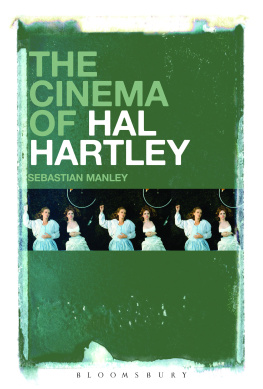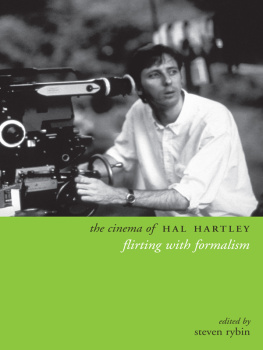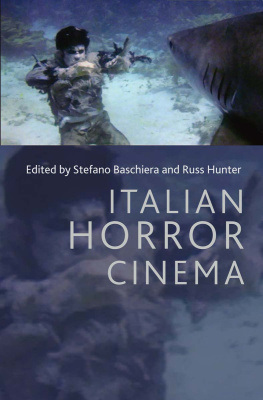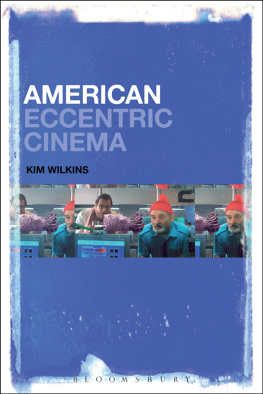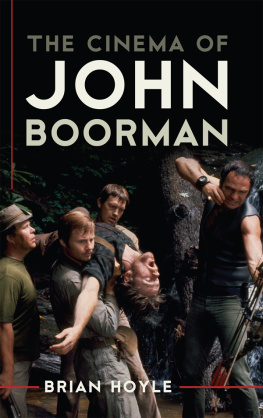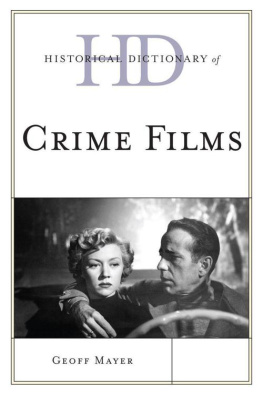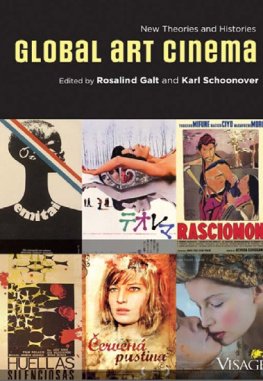The Cinema of Hal Hartley
The Cinema of Hal Hartley
by
Sebastian Manley

Bloomsbury Academic
An imprint of Bloomsbury Publishing Plc
| 1385 Broadway | 50 Bedford Square |
| New York | London |
| NY 10018 | WC1B 3DP |
| USA | UK |
www.bloomsbury.com
First published 2013
Sebastian Manley, 2013
All rights reserved. No part of this publication may be reproduced or transmitted in any form or by any means, electronic or mechanical, including photocopying, recording, or any information storage or retrieval system, without prior permission in writing from the publishers.
No responsibility for loss caused to any individual or organization acting on or refraining from action as a result of the material in this publication can be accepted by Bloomsbury Academic or the author.
Library of Congress Cataloging-in-Publication Data
Manley, Sebastian.
The cinema of Hal Hartley / by Sebastian Manley.
pages cm
Includes bibliographical references and index.
ISBN 978-1-62356-432-2 (hardcover : alk. paper) 1. Hartley, Hal, 1959Criticism and interpretation. 2. Hartley, Hal, 1959Interviews. I. Title.
PN1998.3.H3695M38 2013
791.430233092dc23
2013002694
e-pub ISBN: 978-1-6235-6865-8
Typeset by Deanta Global Publishing Services, Chennai, India
Contents
| Moving beyond the domestic: Maria assumes the role of detective in Trust |
| Depopulated public space in Simple Men |
| Mysterious angst: Ned wrestles with his motorbike in Simple Men |
| Markers of place: Prominent subway signage in The Girl from Monday |
| Landscape as a reflection of state of mind: Jesus looks back at a peaceful-seeming New York City in The Book of Life |
| The Monsters suffering becomes a saleable image in No Such Thing |
| Depopulated spaces: The hospital in Henry Fool |
| Stylized captions in Fay Grim |
| Symbolic internationalism in Accomplice |
| Unmotivated abstraction in The Other Also |
| A note of autobiography: An explicit reference to Hartleys past work in Accomplice |
My thanks, first, to Christine Cornea, who steered the thesis on which this book is based through some choppy waters and who remained insightful, compassionate and inordinately efficient from start to finish. Thanks also to Yvonne Tasker and Diane Negra, for their generous support. Both offered incisive appraisals of my work, and it was Diane who first encouraged me to think about the shift in Hartleys work at the level of place.
I am grateful to the School of Film and Television Studies at the University of East Anglia, whose support during the writing of my thesis was invaluable, and to Rayna Denison, Melanie Williams, Oliver Gruner, Erin Giannini, Richard Nowell and Geoff King, for their comments on my work and their advice.
For help with research materials, thanks to Jan Langlo, Donald Larsson, Diane Negra, James MacDowell, Mark Gallagher, Tim Vermeulen and Geoff Andrew. I am very grateful to Kyle Gilman, who provided me with some information about the Possible Films website and The Possible Films Collection, and to my interviewees, who no doubt had better things to do, but who took the time to respond with great enthusiasm and insight to my questions. Steve Hamilton and Michael Spiller: my sincere thanks.
Finally, thanks to my family, Eve, Chris and Camilla, for support financial and moral; and to Hal Hartley and many other talented people, for the films.
The pages of this book are dedicated, at various levels, to a consideration of the films and the career of Hal Hartley, one of the most significant contributors to the American independent cinema that flowered in the late 1980s and that now occupies a very important (if contested) place in the American film landscape. Hartleys films have been recognized as key examples of independent cinema and also as the works of an American auteur. Of the films discussed here, several, including Trust (1990), can be said to enjoy something close to classic status within independent film discourse. Others, such as The Book of Life (1998), are largely unknown. All can be described as highly distinctive, this quality (however defined) having particular currency, of course, in the world of independent film although usually only within certain limits.
Hartleys approach to the business of film production has also been distinctive. At the industrial level, Hartleys films occupy a diversity of positions: a reflection of both shifts within the industry and, I will argue, a bold effort on the part of the director to retain his authorial independence. Hartley started his career with a very low-budget and well-received feature in 1989 ( The Unbelievable Truth ), and a further two features in the early 1990s: Trust and Simple Men (1992). His entry into the independent film world was made under the watchful gaze of an industry increasingly cognizant of the potential profitability of low-budget alternative films, following the sensational commercial success of sex, lies, and videotape (1989) in particular.of the later productions of the directors 23-year-long career (with the possible exception of Henry Fool ), although Hartley has continued to make feature and short films with regularity, securing funds from a range of independent and overseas companies.
Of the films that comprise the middle and later sections of Hartleys filmography, several can be attributed with an attitude to broad cinematic practices that might be described as oppositional, a questioning of convention that at times goes beyond the offbeat and suggests an identification with forms such as art cinema and even the avant-garde. Flirt (1995) is an intercontinental romantic drama split into three separate narrative sections, each playing out, with variations, the same basic script. No Such Thing (2001) offers a discomforting account of corporate commodification and social malaise the critical reception of which was mixed, to say the least. Fay Grim (2006) is an around-the-world espionage narrative that blends political satire and zany farce. An even greater sense of unconventionality characterizes many of Hartleys short films: Accomplice (2009), for example, is a 3-minute noir story featuring a voice-over from a central character who is never seen; The Other Also (1997) is a dialogue-free piece composed of semi-abstract images. These later-period films fit, in many respects, somewhat awkwardly into independent cinema. If Hartleys Long Island features can still be seen to exert an influence (whether direct or indirect) on a large number of independent productions (particularly those profiling familial dysfunction in suburbia), the later films seem to offer something more singular, something closer to the territory of the one-off although this is not to say that the films do not maintain various continuities with some examples of independent film and with narrative cinema more generally.
Journalistic interest and distributor confidence in many of these later films have been, perhaps unsurprisingly, quite low. Hartley himself has acquired something of a reputation as a missing auteur, at least in America, where he has lived and worked only intermittently over the past 6 or 7 years.
The purpose of this study is, in the first instance, to start to redress the lack of scholarship on Hartley and to propose some new and substantial lines of inquiry that will help install a productive and innovative film-maker into current discussions of the aesthetics, politics and economics of independent cinema. I will argue that it is at the closely related levels of place and cultural identity, as much as at the levels of form and genre, that Hartleys cinema marks itself as distinctive within American film. A discussion of place and cultural identity in Hartleys work will yield some insights that help to explain Hartleys decreased cultural status. These two dimensions will be discussed alongside a number of other related dimensions, including form, genre and tone, that are more frequently discussed in accounts both of Hartleys cinema and of independent cinema. The study will thus provide a new account of Hartley that is nevertheless related clearly to existing scholarship.
Next page
